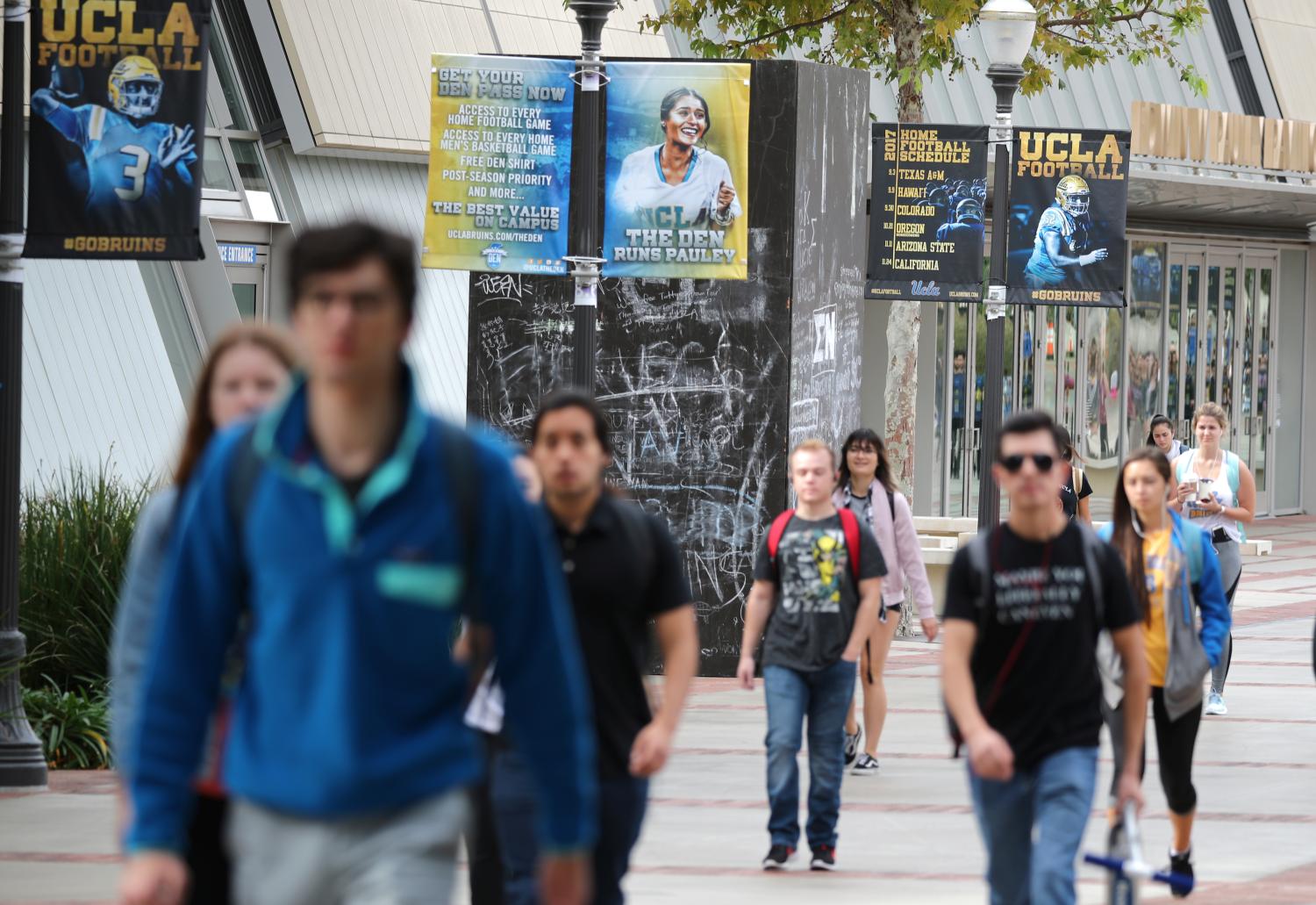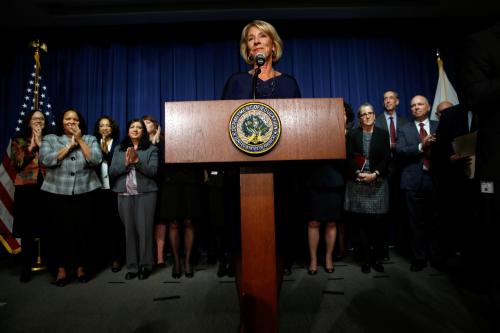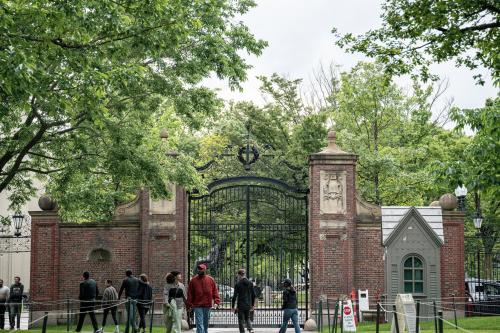The share of borrowers leaving school with more than $50,000 in federal student debt increased from 2 percent in 1992 to 17 percent in 2014. Consequently, a small share of borrowers now owes the majority of loan dollars in the United States.
Past research has shown that these borrowers have low rates of default compared with borrowers with relatively small debt. Many of these large-balance borrowers represent graduate students at selective institutions, and as such, are seen as low-risk. Today, however, more large-balance borrowers are falling behind on their payments than are making progress reducing their debts.
In “Borrowers with Large Balances: Rising Student Debt and Falling Repayment Rates” (PDF), Brookings senior fellow Adam Looney and Constantine Yannelis look at the composition of these large-balance borrowers as well as what it means for taxpayers if these borrowers are unable to repay their loans.
They find that more and more, students taking out large loans are attending institutions with poorer loan repayment outcomes and worse labor market outcomes. For instance, for borrowers starting to repay loans in 2000, less than 5 percent of borrowers with repayment balances above $50,000 borrowed to attend for-profit institutions. In 2014, that share surpassed 20 percent. Meanwhile, these large-balance borrowers are increasingly likely to be parents and independent undergraduate borrowers, whose economic outlook tends to be riskier.
At the same time, these borrowers, for the first time ever, appear to be falling behind on their loan repayment. This could be due in part to the recession, as well as the introduction of new repayment options such as income driven repayment, and the take-up of forbearances, policies that allow borrowers to reduce or suspend their payments without defaulting.
Because non-repayment of these large-balance loans represent a significant burden on taxpayers, Looney and Yannelis suggest a number of policies to help reduce these risks including screening large-balance borrowers, restoring limits on credit, eliminating certain types of loans, and applying institutional accountability rules to graduate or parent loans.
The authors conclude that “the selective reduction in credit could reduce or reverse unintended consequences or costs of lending programs. For instance, reducing loan limits, eliminating certain types of high-cost loans, strengthening institutional accountability systems, and applying accountability rules to graduate and parent loans could reduce adverse outcomes, reduce risks on taxpayers, and improve economic outcomes.”
Read the full report here.
The Brookings Institution is committed to quality, independence, and impact.
We are supported by a diverse array of funders. In line with our values and policies, each Brookings publication represents the sole views of its author(s).







